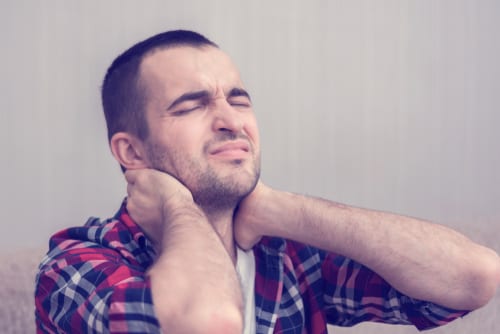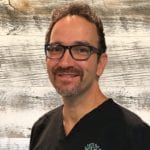Cervicogenic headaches start in the neck and are primarily felt in the back part of the head. They often follow an injury like whiplash or are associated with a cervical spine problem. They generally come from the upper neck. The upper facet joints in the neck and the ligaments and tendons that attach to the base of the head are common sources of headache pain.

The practitioners at CHARM often treat cervicogenic headaches, and the pain from these types of headaches can come from lots of different sources. However, some research shows that a simple issue like postural alignment could be a common causative factor.
Common causes of Cervicogenic Headache:
- Irritation of one of the nerves that go from the neck to the head. These include the greater, lesser, and third occipital nerve (back of the head) as well as the superficial cervical plexus (front of the neck).
- Damage to or arthritis of the C0-C1, C1-C2, or C2-C3 facets.
- Trigger points in the upper neck muscles.
These are some of the damaged structures that can cause headaches, but what can cause these areas to become painful?
- Cranio-cervical Instability. When the ligaments that hold the head on the neck are “loose”.
- Direct trauma to any of the structures above.
- And there is a third, which is your POSTURE, which we will focus on. Posture in this case means the relative position of your head on your neck.
Posture and Cervicogenic Headaches
Researchers of a new study, published in Musculoskeletal Science and Practice, evaluated 3D images of 200 individual’s postural alignment — 100 individuals who’d had frequent headaches for at least 3 months and 100 control patients of the same age and gender.
The results showed that those with increased thoracic kyphosis, scoliosis and increased vertebral rotation were all associated with a higher risk of cervicogenic headache.
Thoracic kyphosis means that your head is forward and the upper part of your back is also bent too far forward:

Increased coronal imbalance means a side bent spine or scoliosis:

Vertebral rotation goes along with scoliosis as when the spine bends it also rotates.
So what does this mean for you?
All of this means that if the spine beneath your head is bent forward or sideways, that can be associated with more headaches because the structures in the upper neck are getting irritated or damaged by that imbalance. The forces normally acting on the spine are not “loaded” symmetrically and are essentially building up on one spot rather than being equally distributed.
What can you do to treat cervicogenic headaches? See a Doctor of Physical Medicine and Rehabilitation, also commonly referred to as a physiatrist. You can read more here about what exactly a physiatrist is: https://charmaustin.com/what-is-a-physiatrist-d63/ Get a thorough structural evaluation and appropriate treatment of any causative factors. Tenderness, popping, and pain referring to the ears, occiput, temporal region and face are common headache patterns that are treatable with Orthobiologic / Cellular Therapies such as Platelet-Rich Plasma, Bone Marrow Concentrate, and Prolotherapy.
Physical therapy is usually a great start. Specialized physical therapy can effectively compliment neck rehabilitation by addressing deep stabilizer control and postural correction and has been found to be a powerful compliment to treating headache sufferers. Physical Therapy can be followed by exercise programs focusing on posture and stability such as Pilates or Barre.
The bottom line is we need to take care of our spines as we get older. That nasty forward head posture that we all get from age or looking down at our phones and computers may well be causing your headaches. The key is to start early and address these issues before any rigid bony changes occur.

Eduardo Elizondo
MDBoard-Certified Physical Medicine & Rehabilitation
Board-Certified Electrodiagnostic Medicine
Certified Life Care Planner



